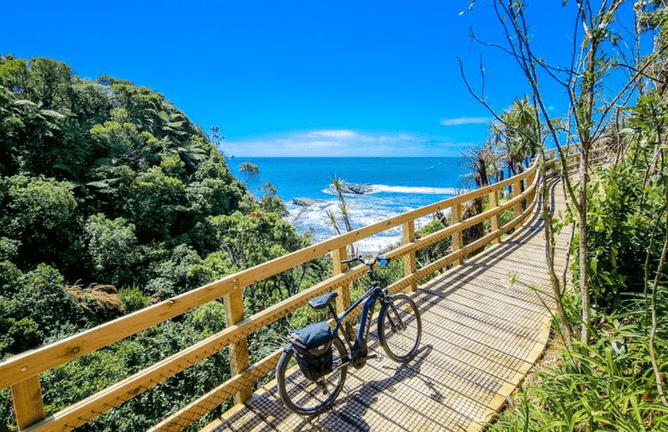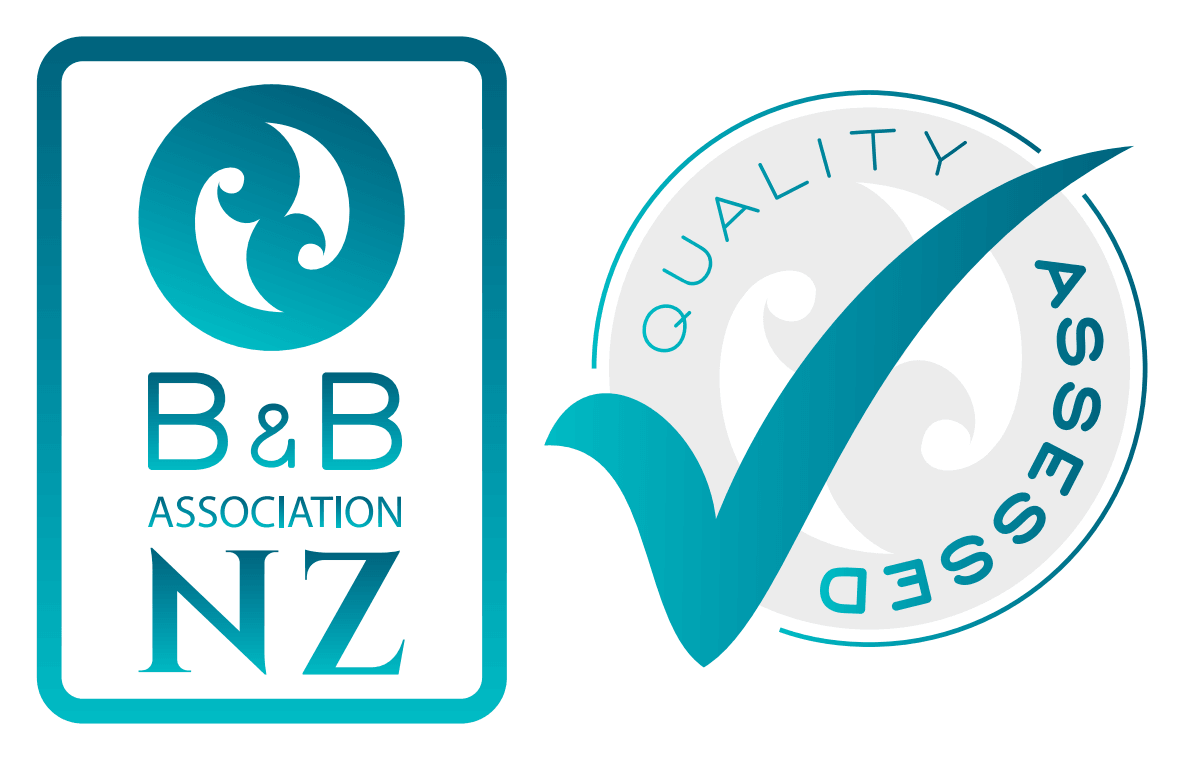Cape Foulwind to Ōkari Lagoon – Along the Wild Edge of the Coast
This is one of our favourite stretches of the Kawatiri Coastal Trail. It begins at the dramatic cliffs of Cape Foulwind, where the wind often carries the sound of the sea long before you can see the water. Each time we set out from here, we feel that mix of excitement and calm that only the West Coast can bring. The light seems sharper, the colours deeper, and the sea stretches endlessly into the horizon.
We always like to pause at the Cape before we start riding. The lookout above the seal colony is one of the most beautiful spots on the coast. From here you can watch the New Zealand fur seals basking on the rocks below, hear their low calls, and feel the spray of the sea when the tide is high. The air is alive with the cries of gulls and the crash of waves against the rocks. It is a place that fills us with energy, reminding us why we live here and why we love to share this region with our guests.
From the headland the trail follows a gentle descent through native bush and open grassland. The air smells of salt and flax. We pass stands of tall cabbage trees and occasional flax bushes heavy with tui. The ride is never difficult, but it is endlessly interesting. Every corner seems to open to a new view — a flash of coastline, a stretch of surf, a field of wildflowers glowing under the sky.
Soon the path curves toward Tauranga Bay, one of the most photographed beaches on the northern West Coast. The bay itself feels welcoming, with its long crescent of golden sand and its waves rolling steadily onto the shore. On calm days the water sparkles like glass, and on wild days it roars and foams with dramatic energy. We often stop here for coffee or lunch, sometimes watching local surfers catching waves just beyond the rocks. It is easy to stay longer than planned.
Leaving Tauranga Bay, the trail crosses open country and begins to follow the coast more closely. The landscape feels wilder again, a mix of wind-swept grasses and native shrubs. The scent of the ocean drifts in and out, and sometimes the call of a distant weka or the rustle of a hidden fantail reminds us how rich this coastline is with life.
As the trail continues south, it begins to soften again. The land flattens, the sea disappears behind dunes, and the quiet sound of water returns — this time from the wetlands that form around Ōkari Lagoon. This part of the trail always surprises us with its tranquillity. After the energy of the sea cliffs, the lagoon feels almost sacred. The air is still, and the reflections of clouds on the surface create a sense of calm that is hard to describe.
Here we often slow down completely. We might walk beside our bikes, listening to the calls of herons and bitterns that nest in the reeds. The lagoon is alive with birdlife, yet the atmosphere is peaceful. Every now and then a fish breaks the surface, sending ripples across the water. It feels timeless, untouched, and deeply grounding.
We love to end the day here, perhaps with a small picnic as the sun lowers behind the dunes. The light takes on a soft golden hue, and everything seems to glow. Sometimes we will see the faint shape of the Paparoa Range in the distance, its peaks turning pink in the evening light. Moments like this are why we always tell guests not to rush the trail. It is not about distance or speed but about taking the time to really feel the place.
For us, this part of the Kawatiri Coastal Trail captures the true essence of the West Coast — wild, generous, and endlessly changing. From the energy of the Cape to the serenity of the lagoon, it is a journey that reminds us how beautifully nature balances drama with peace. Each time we finish, we are reminded how lucky we are to call this coastline home.


